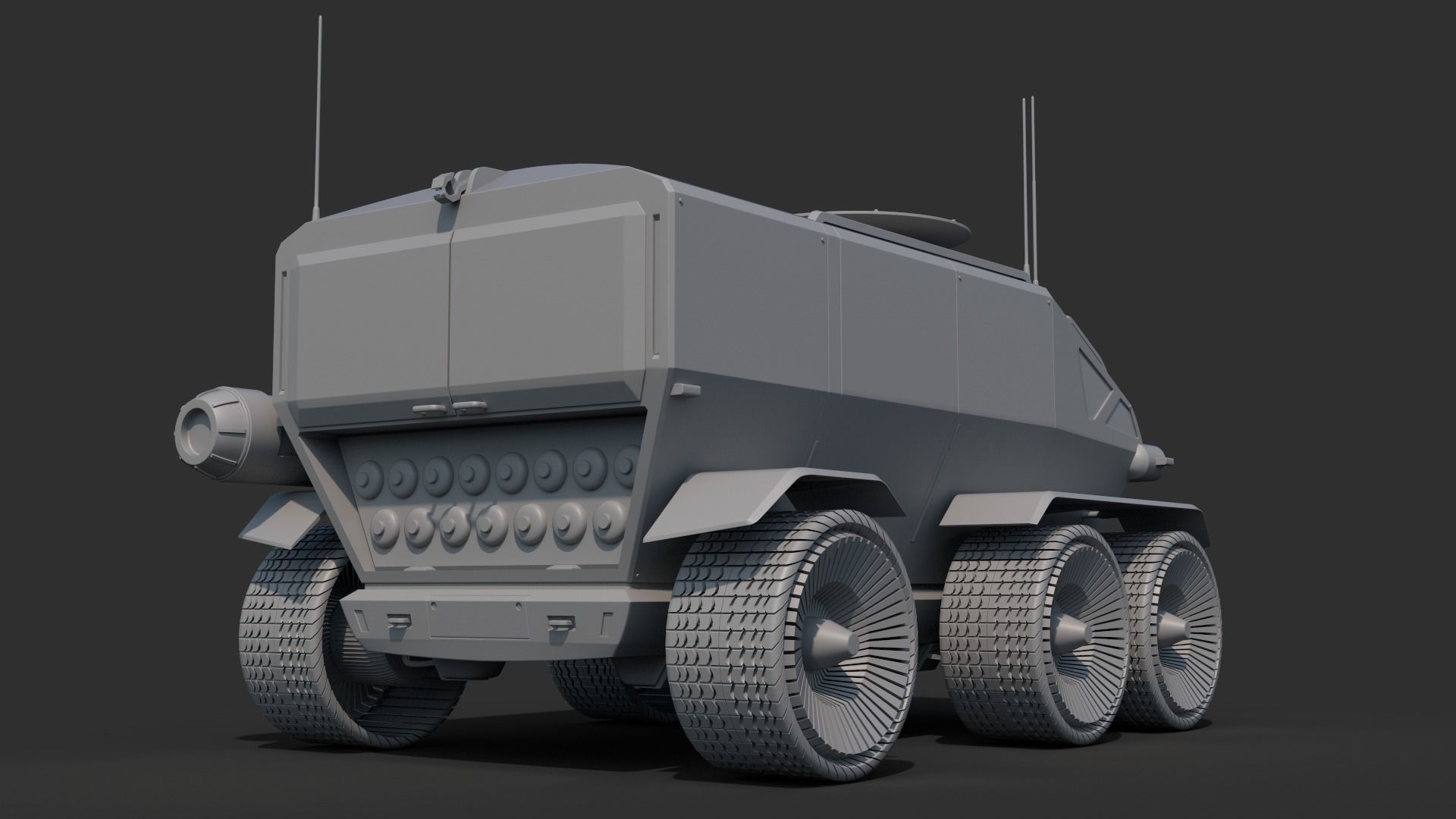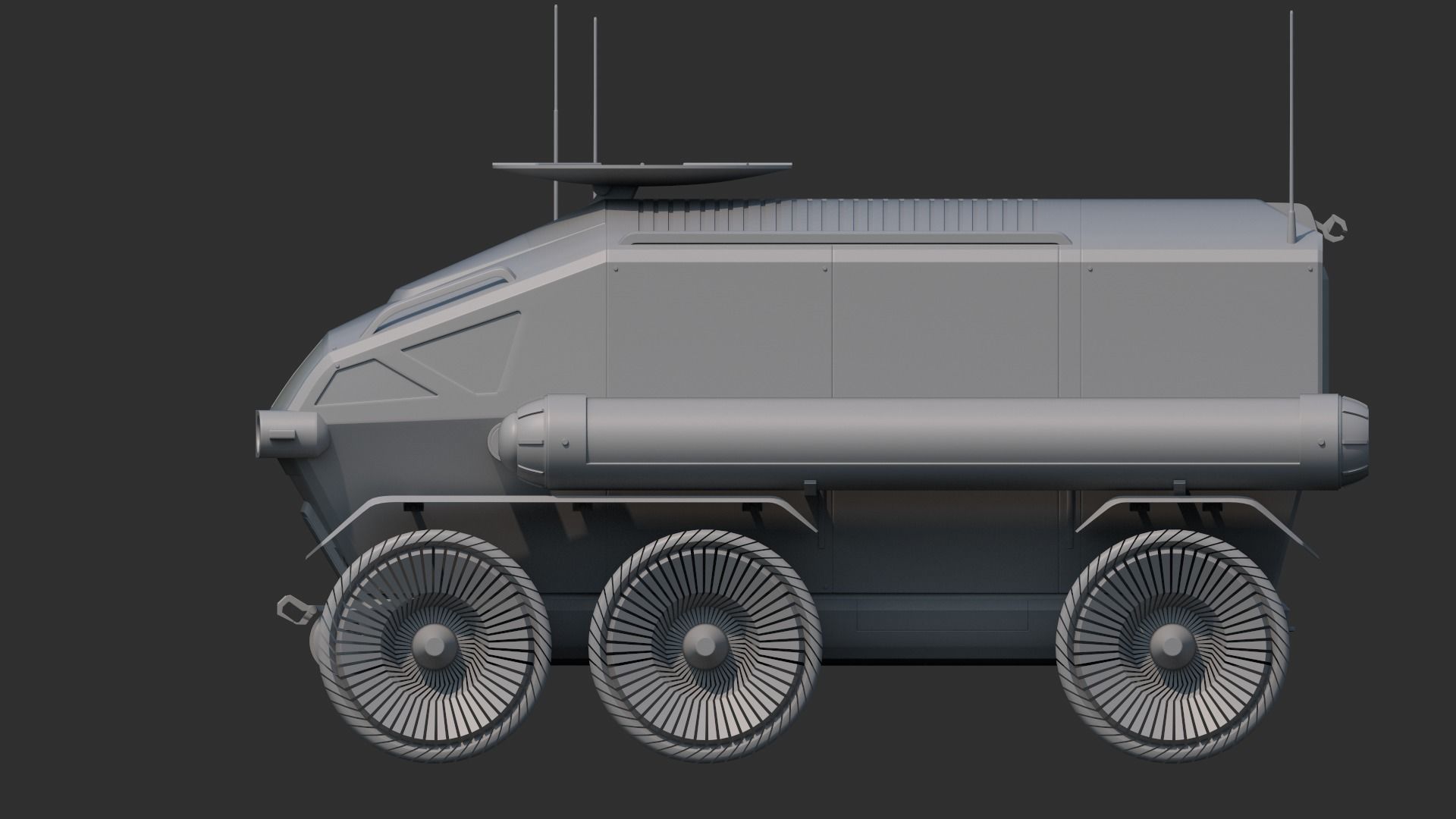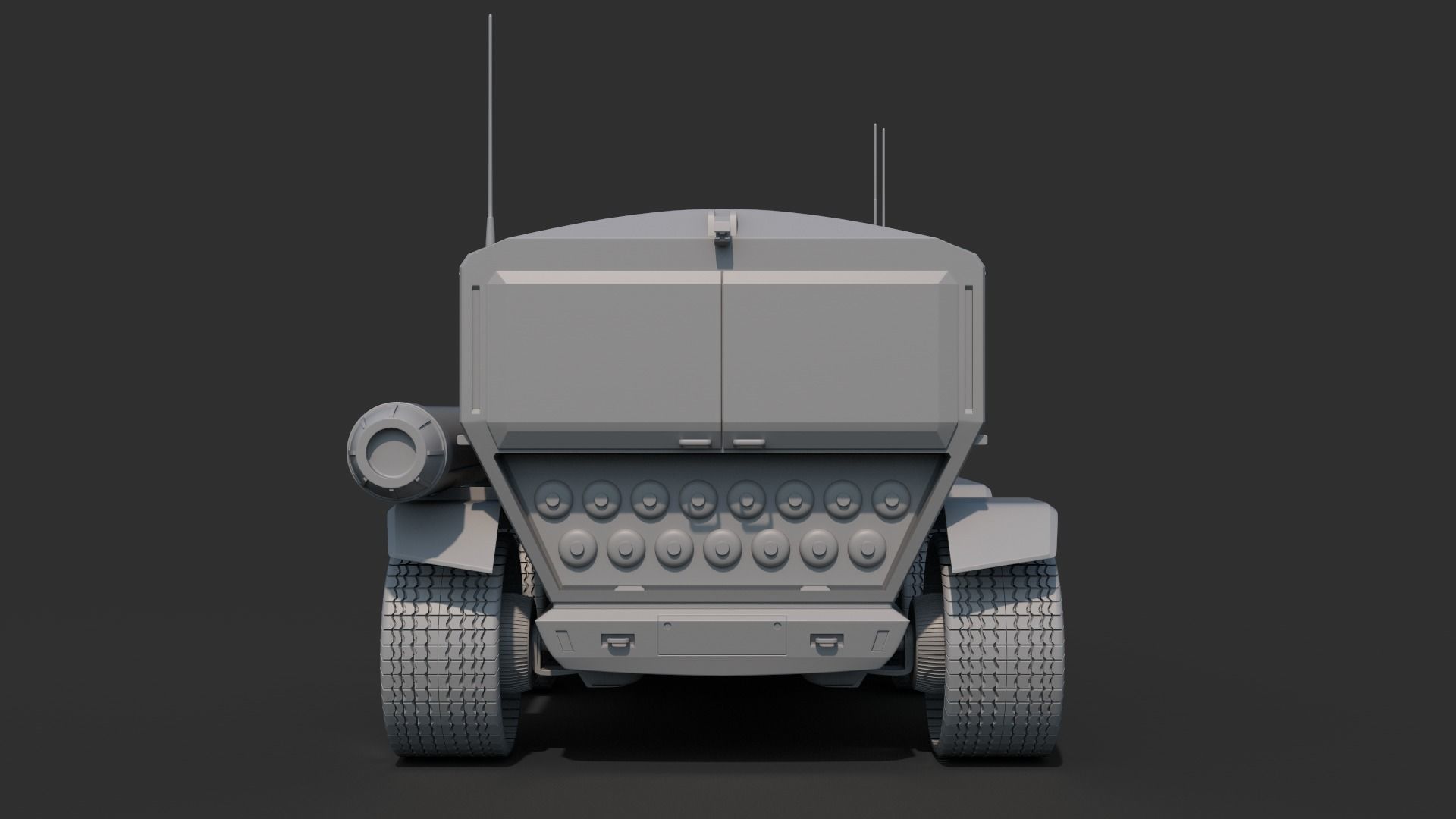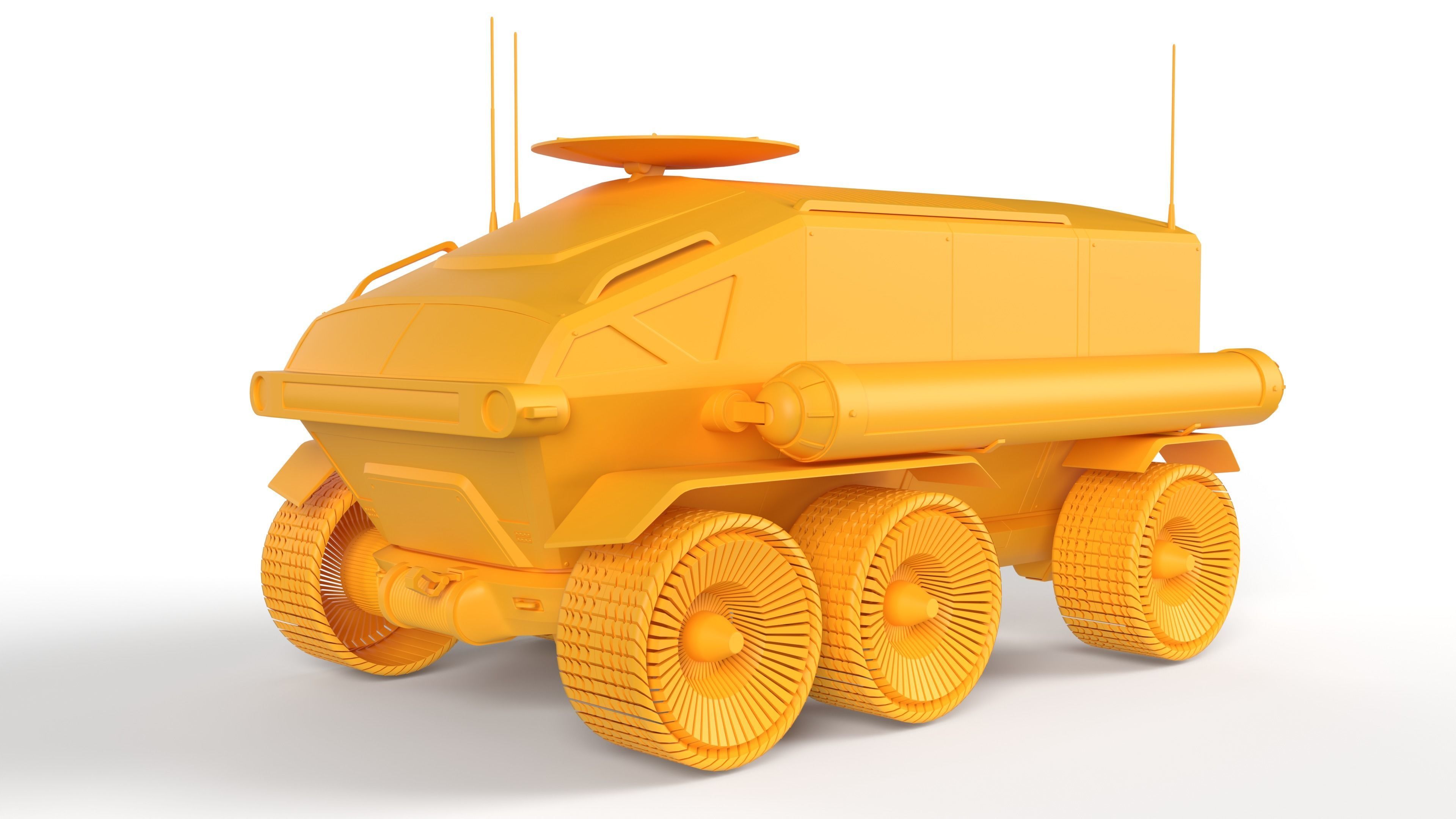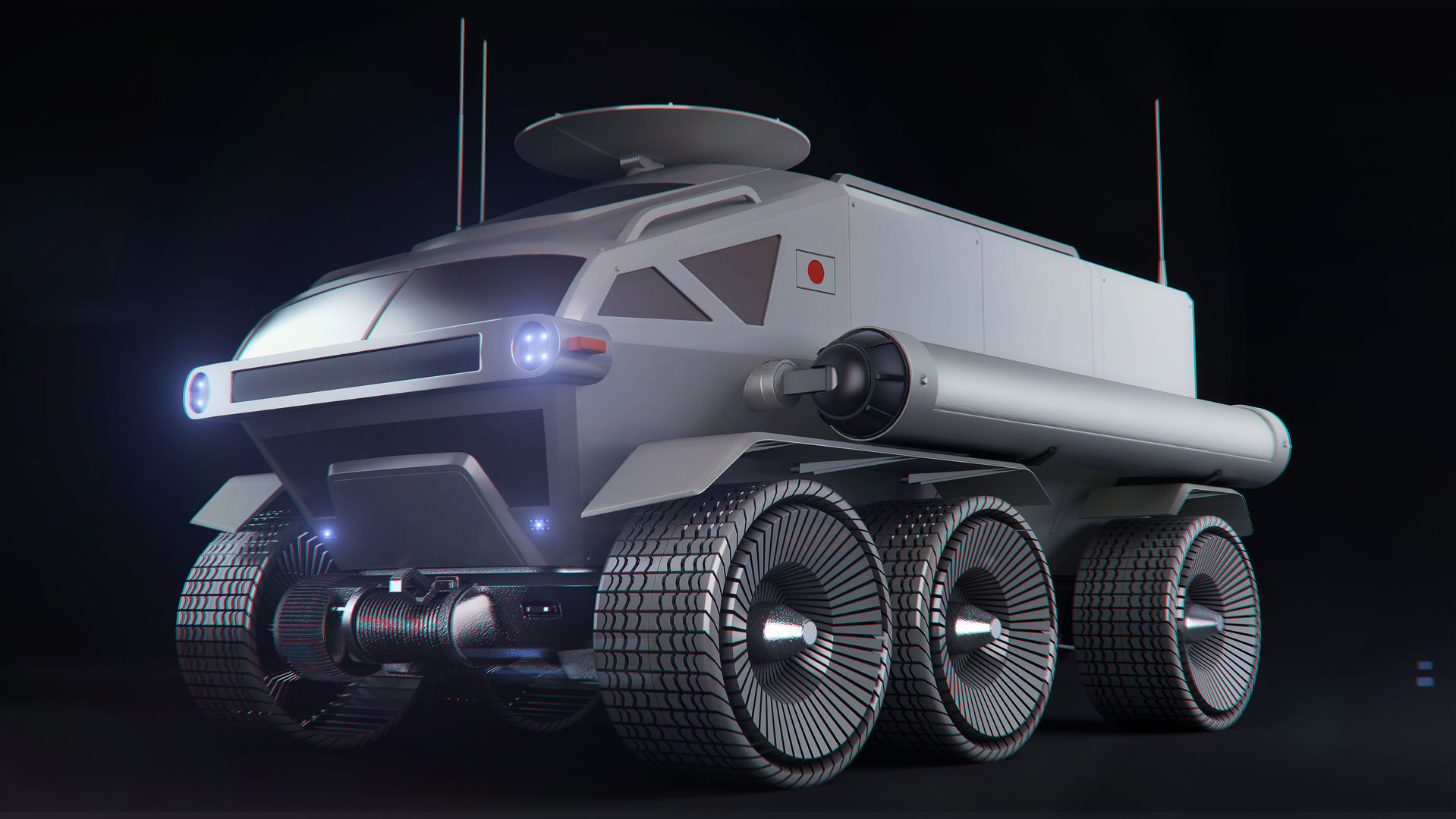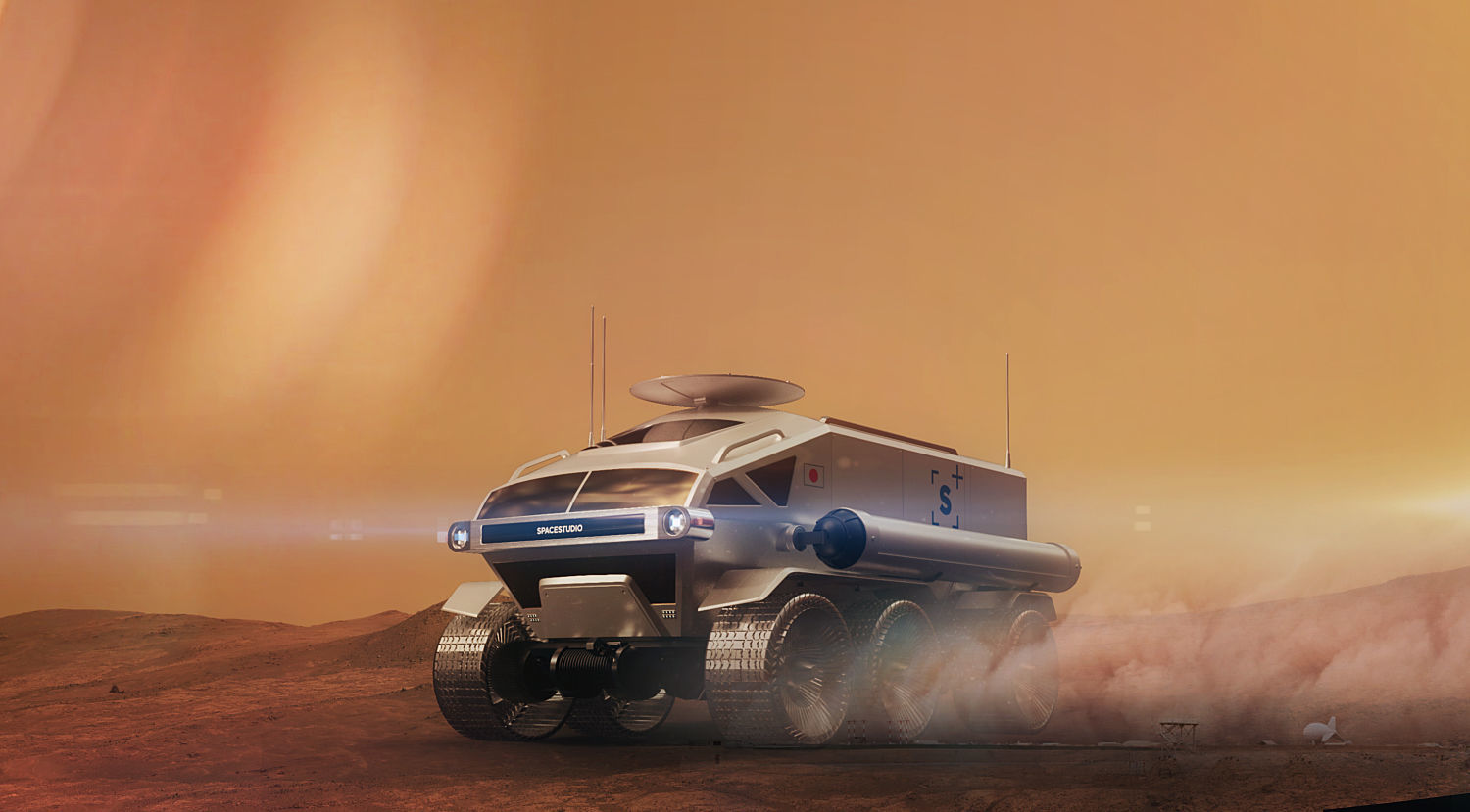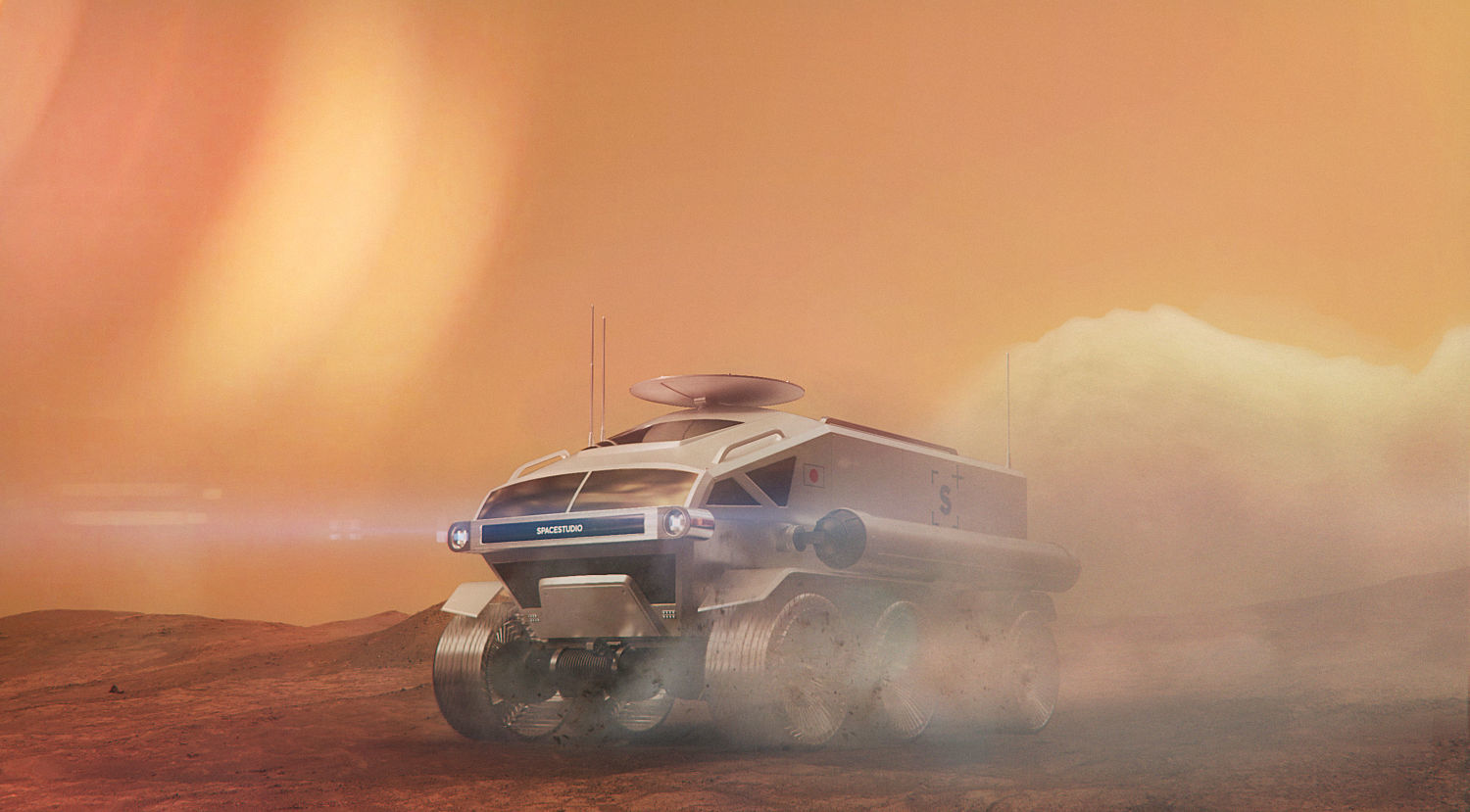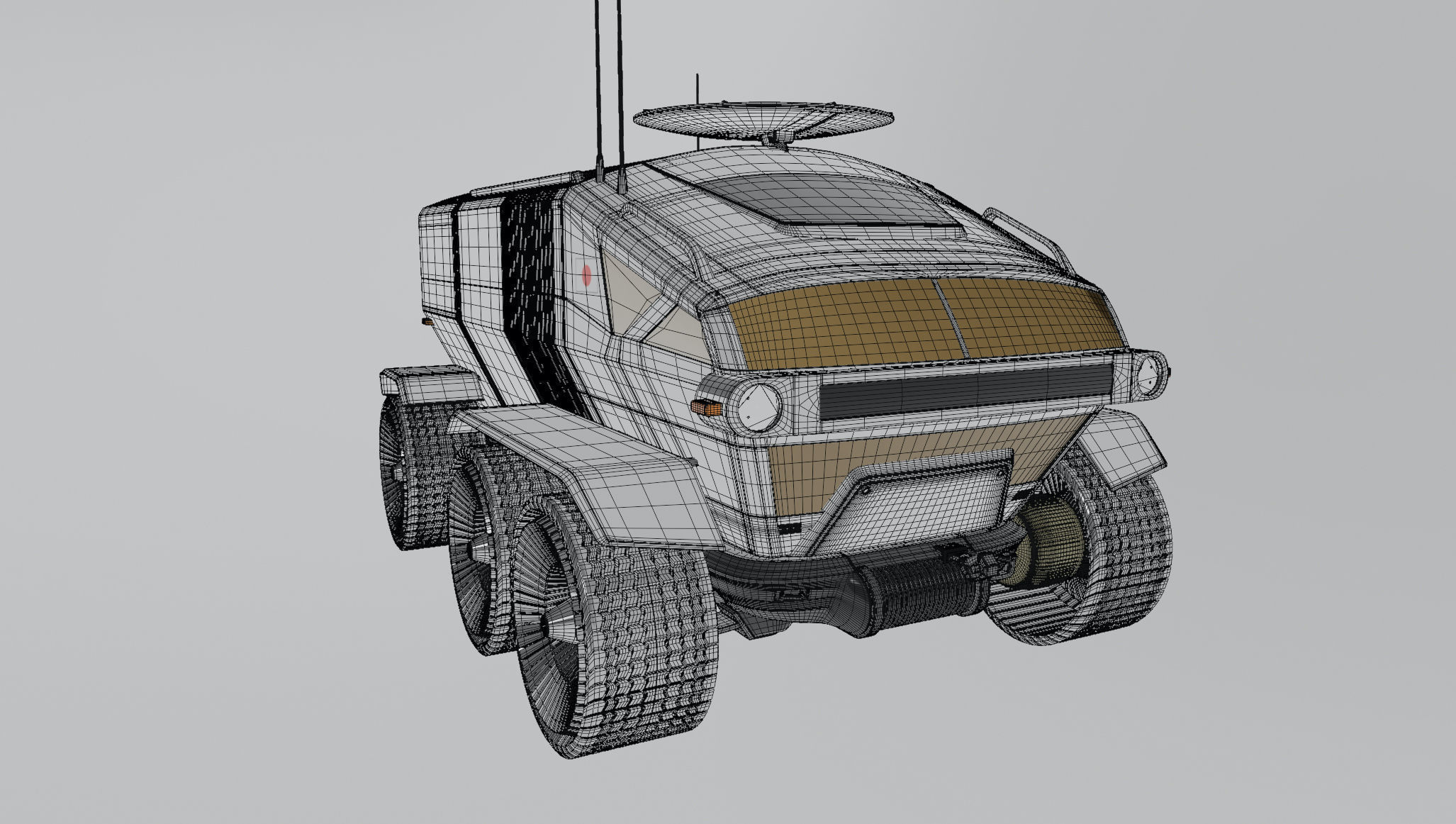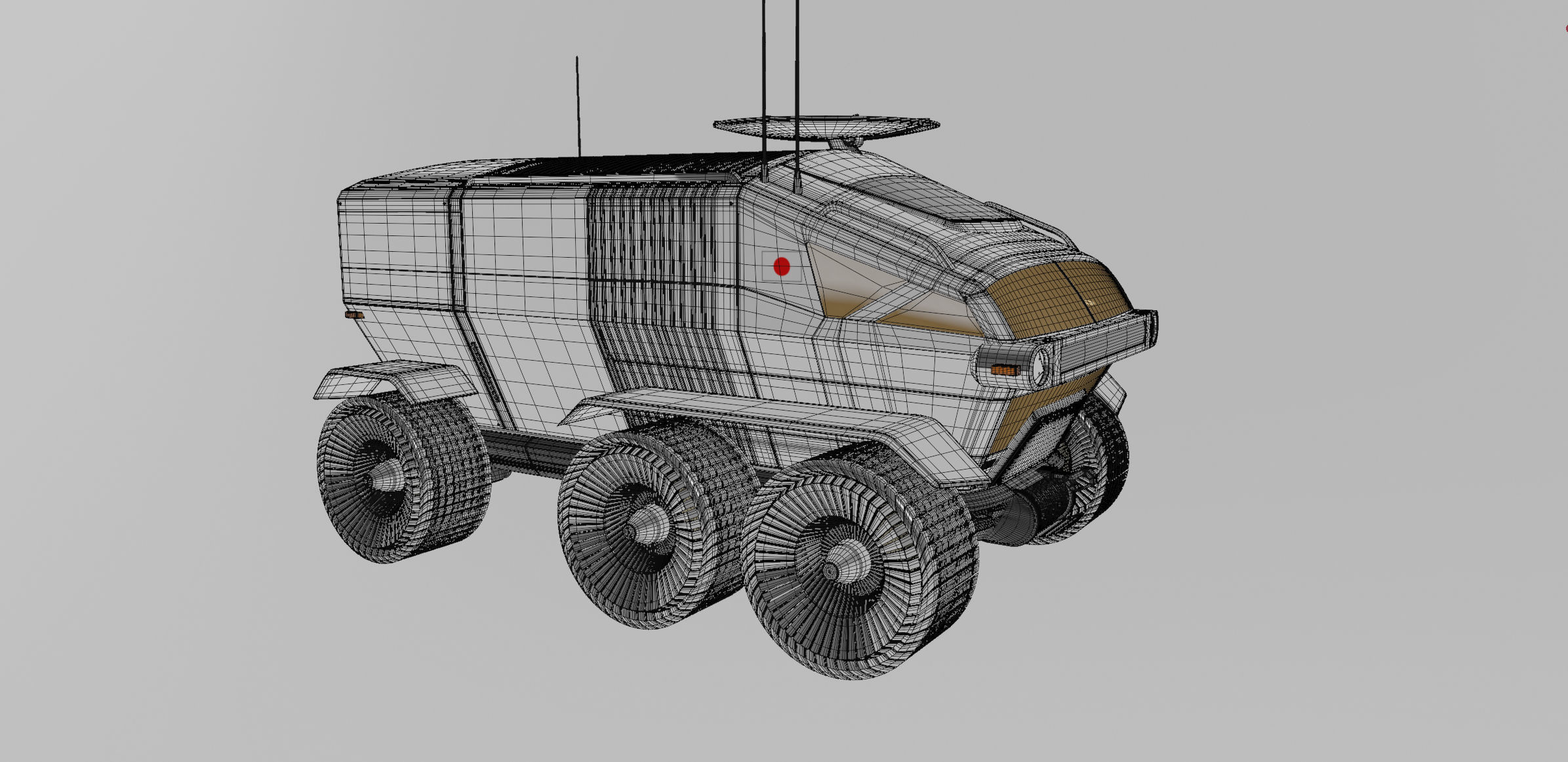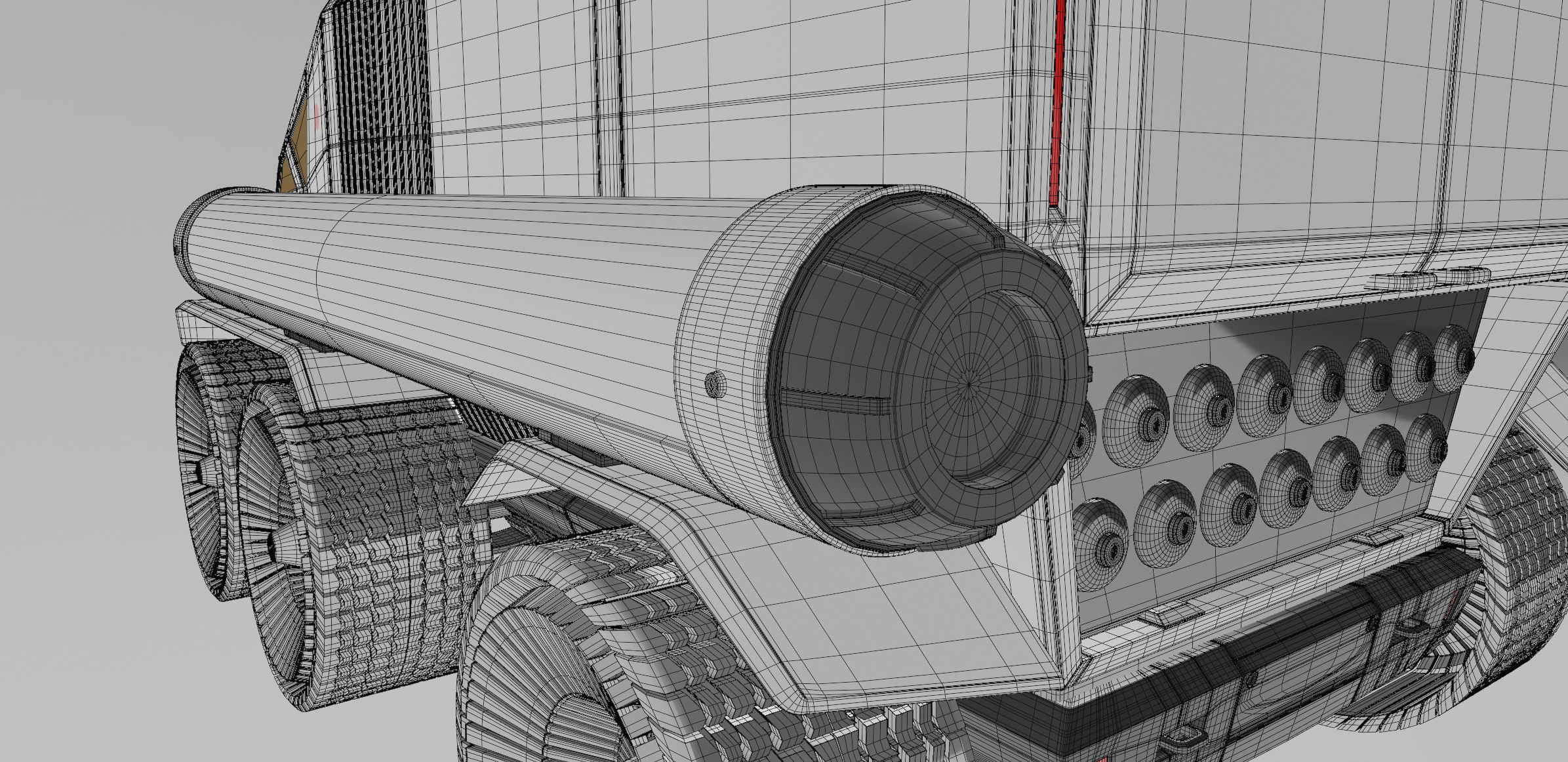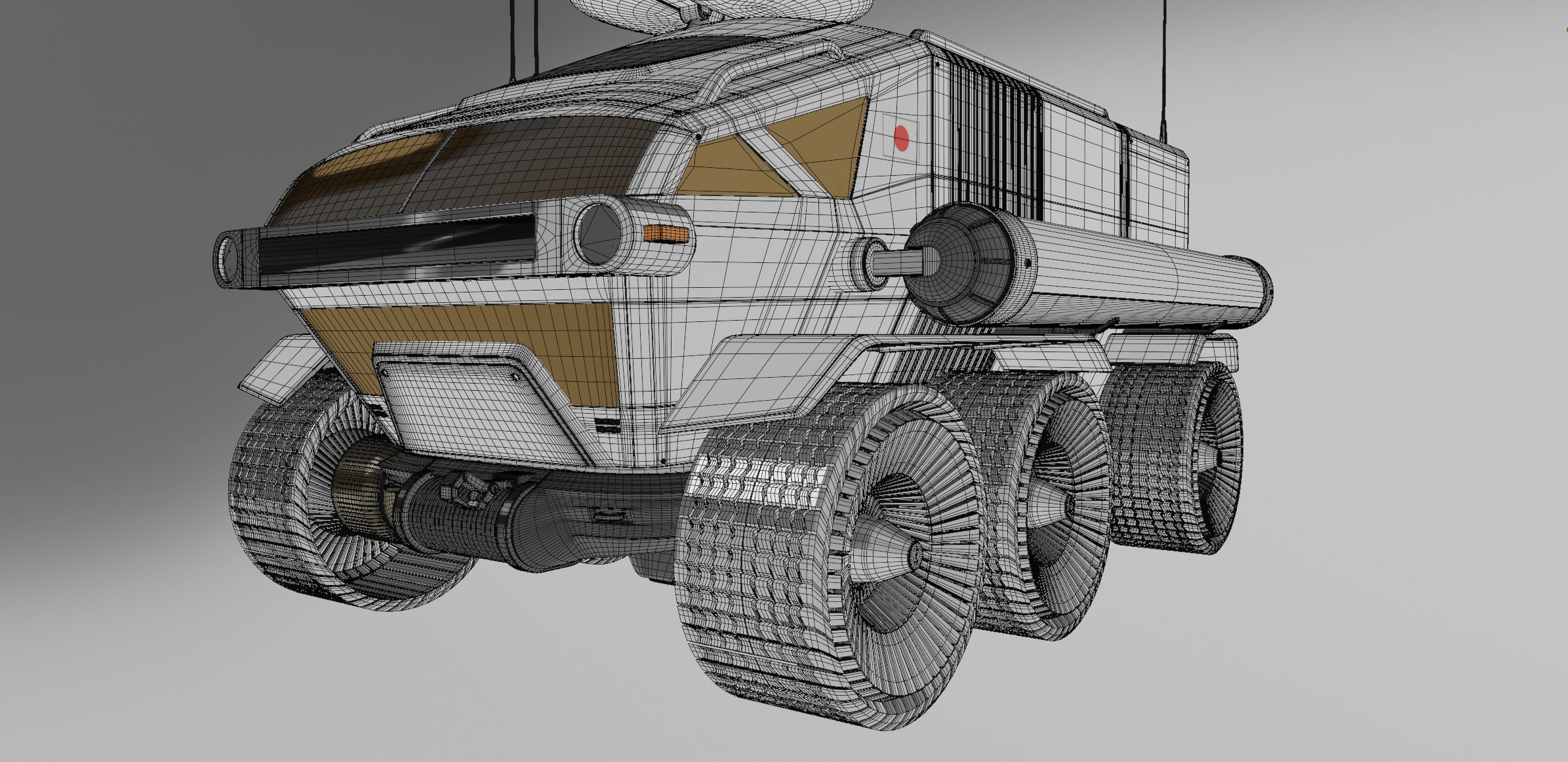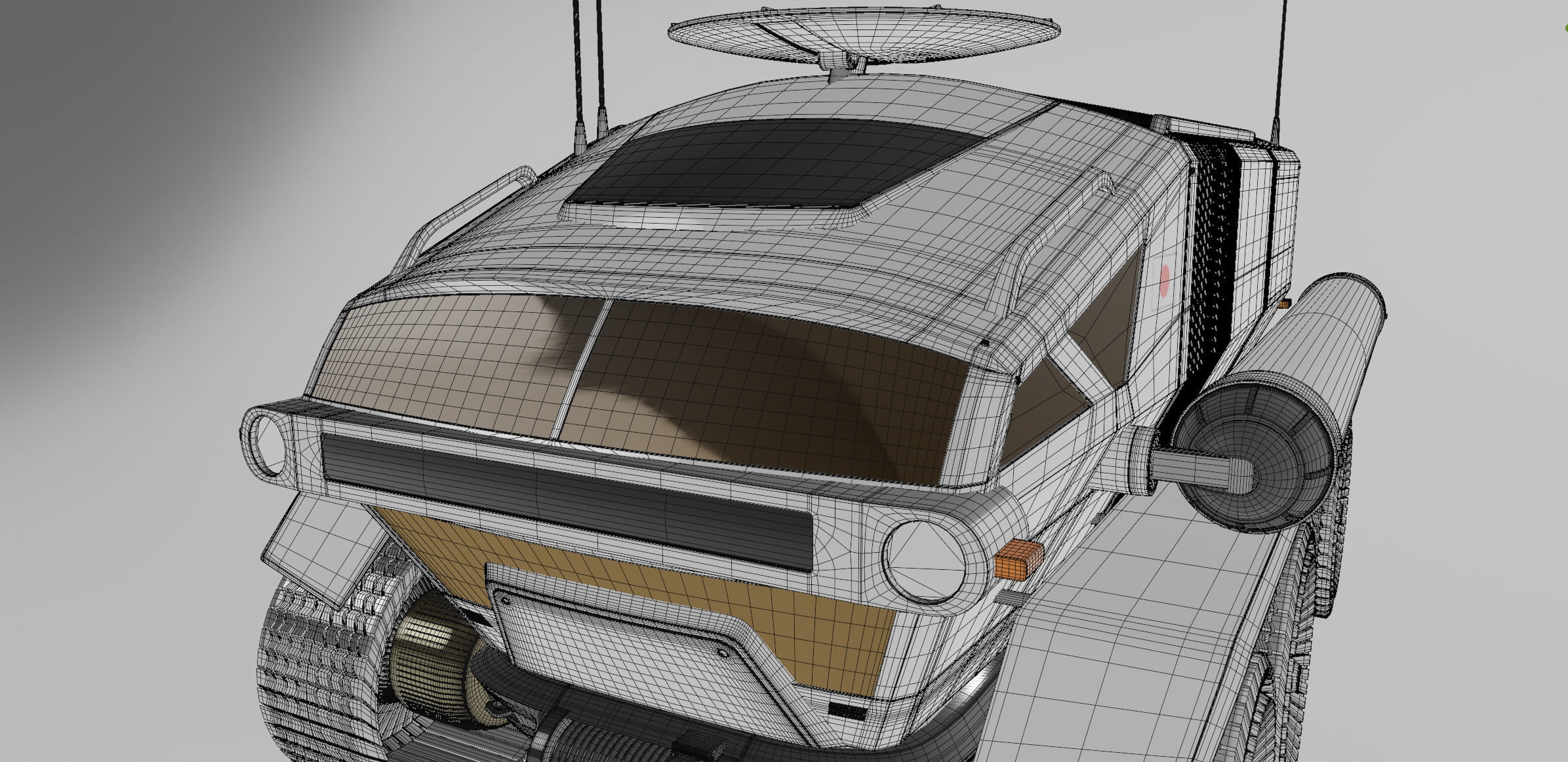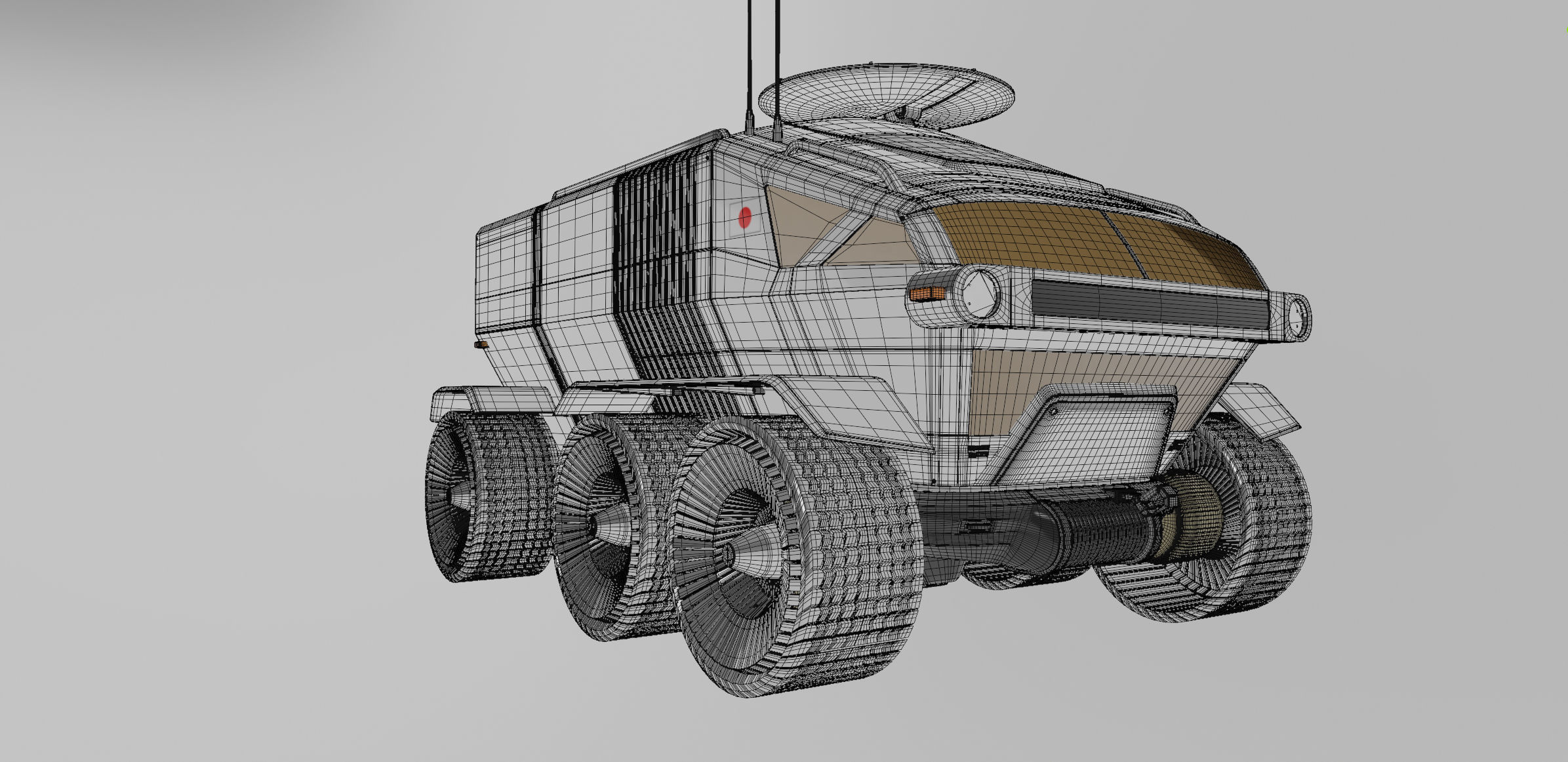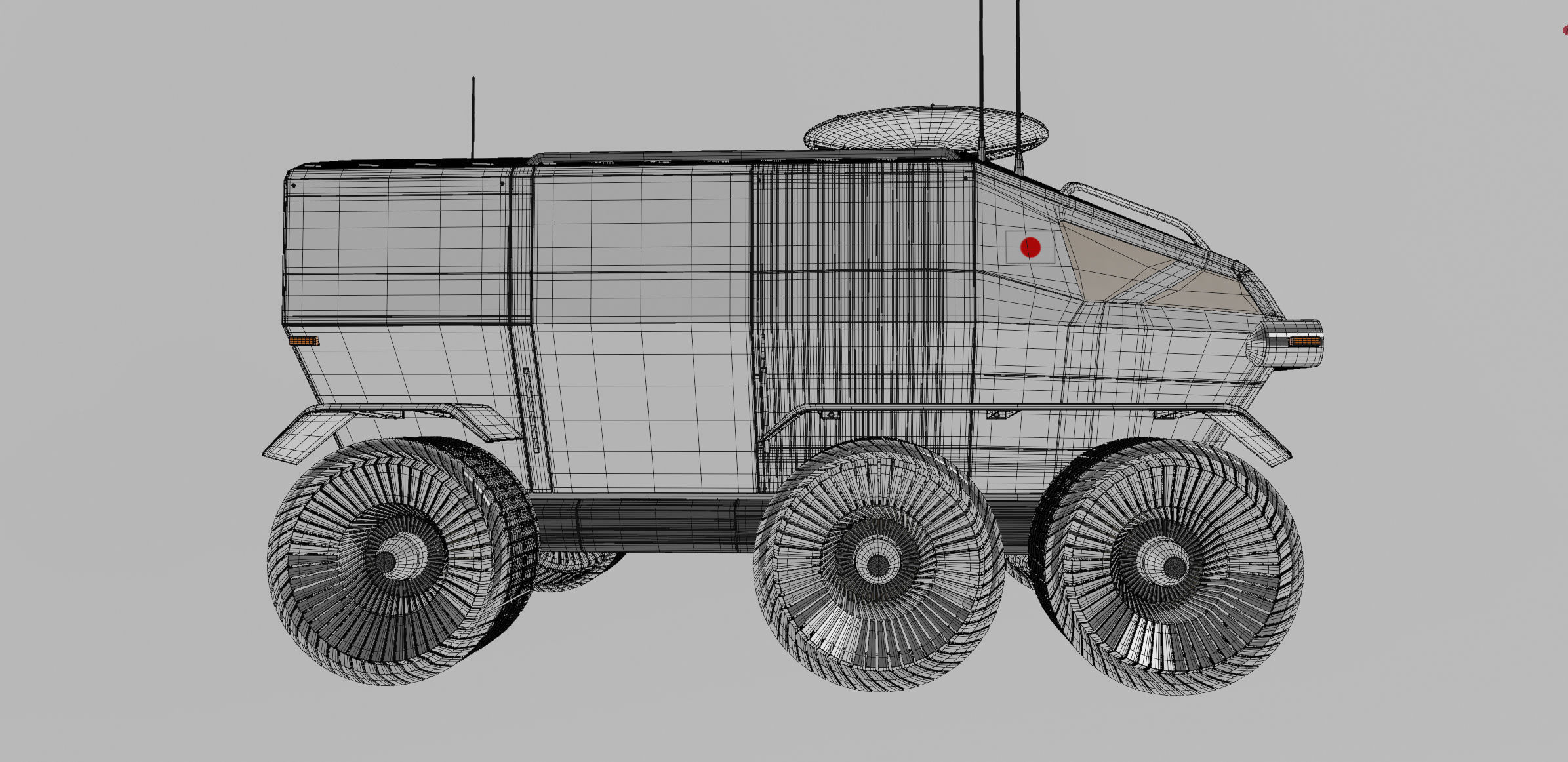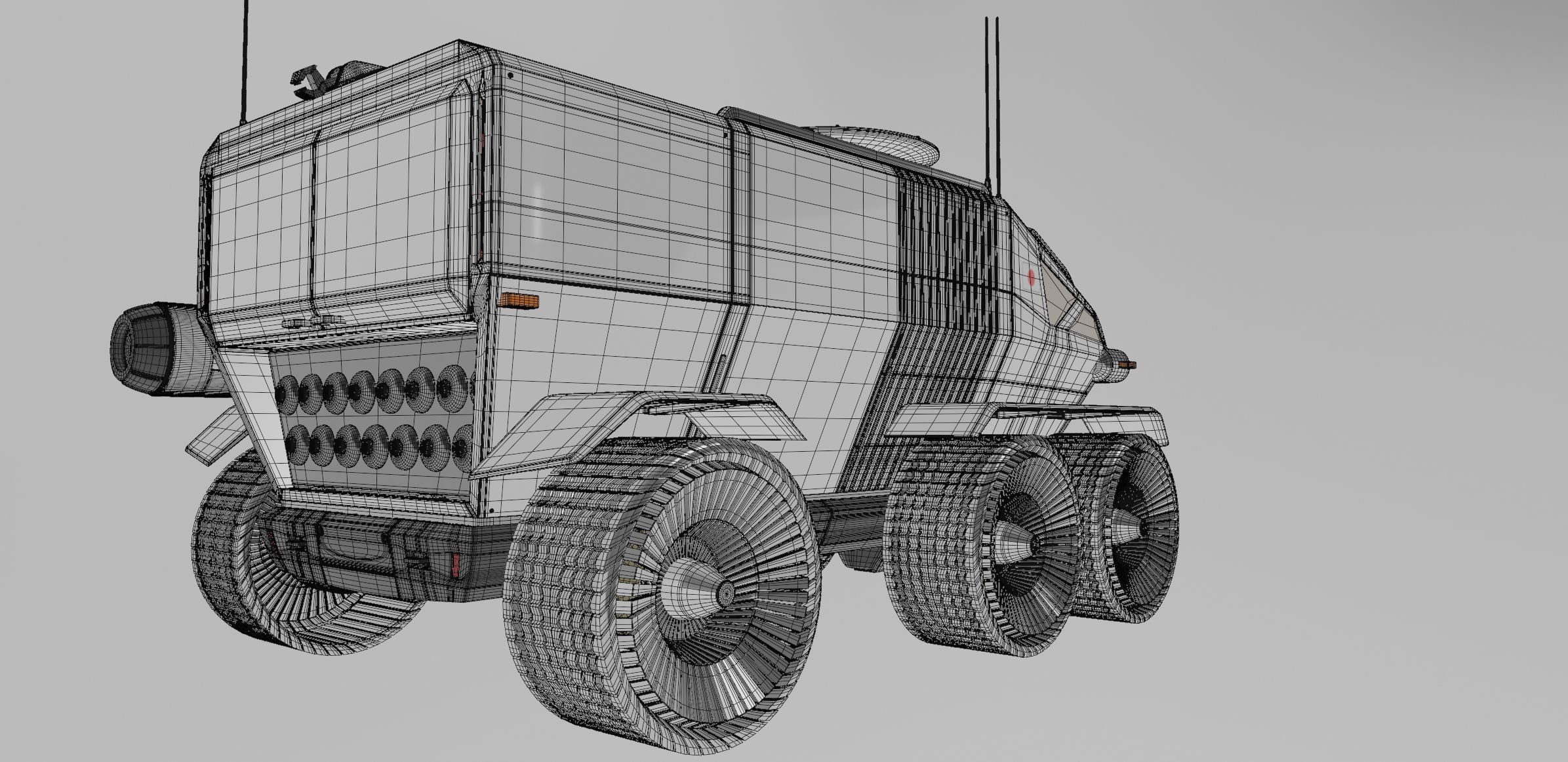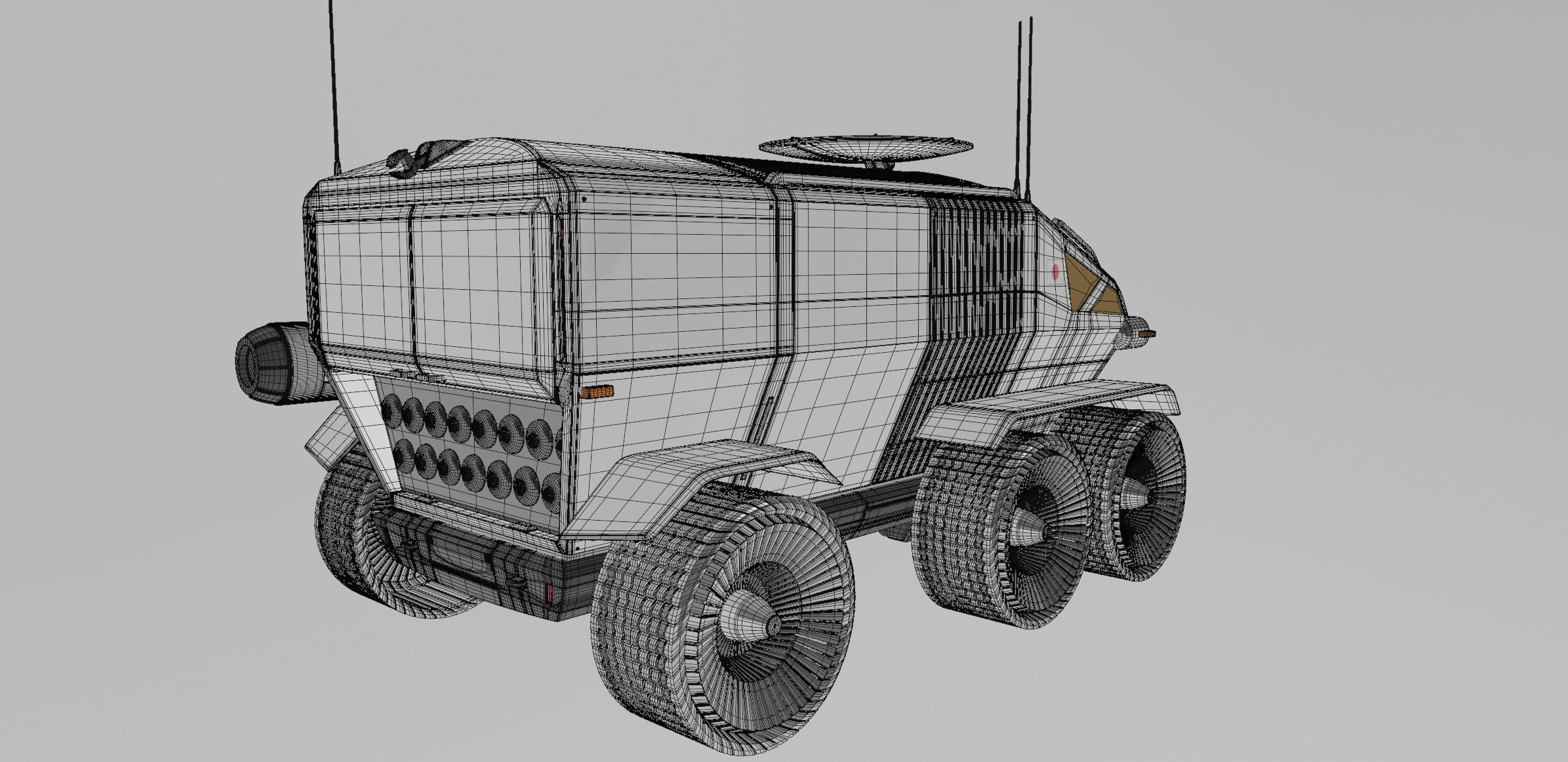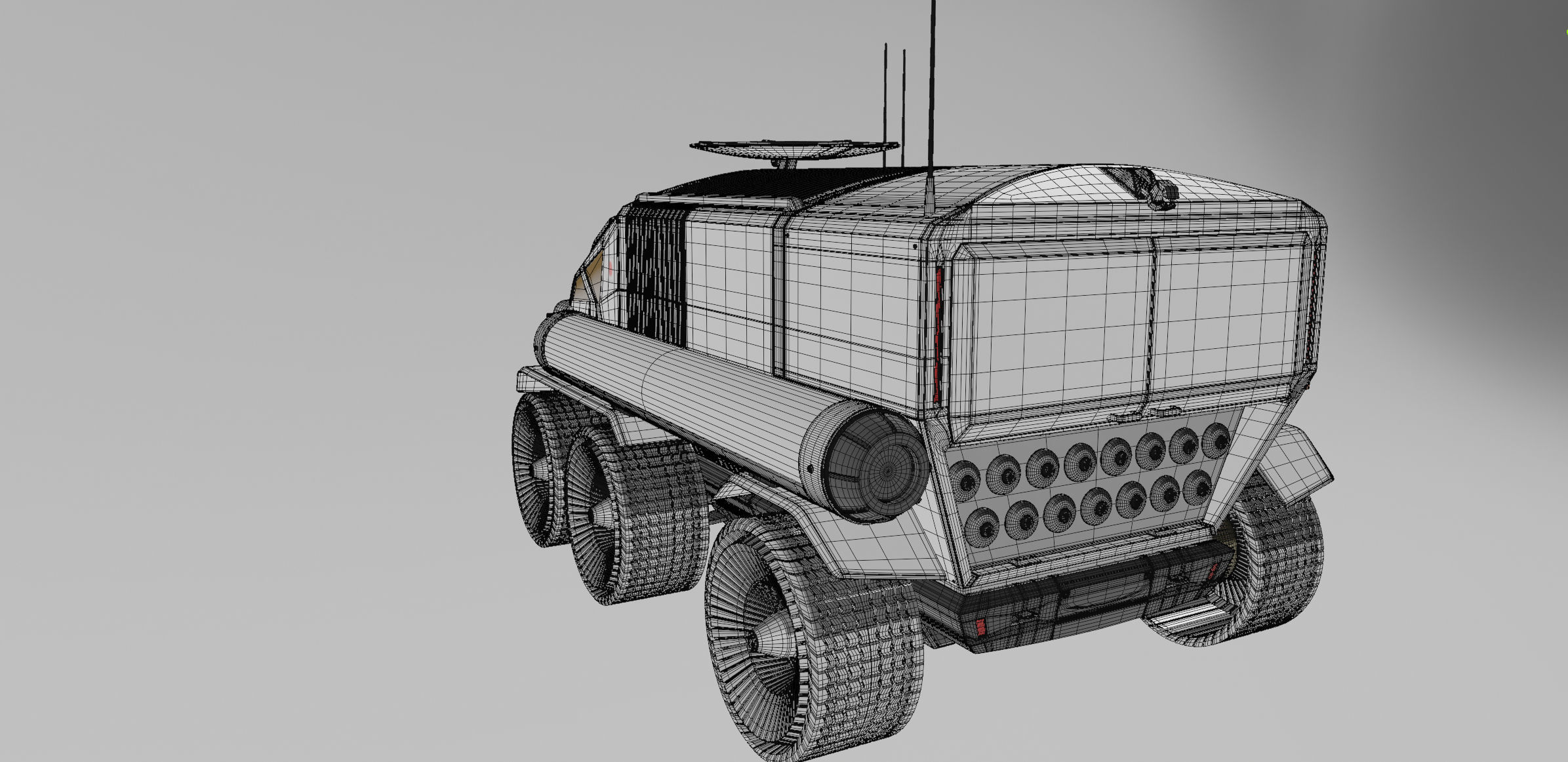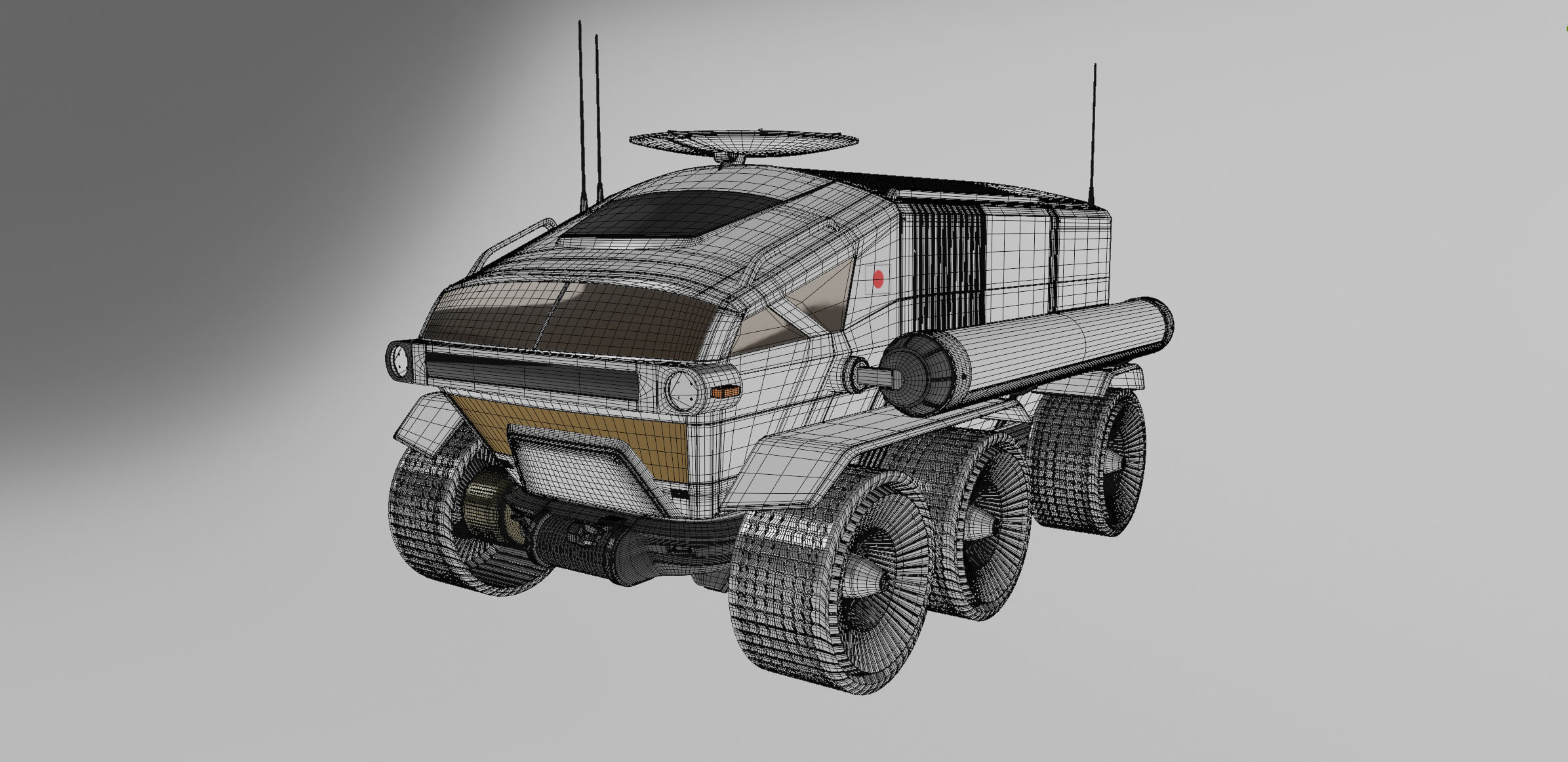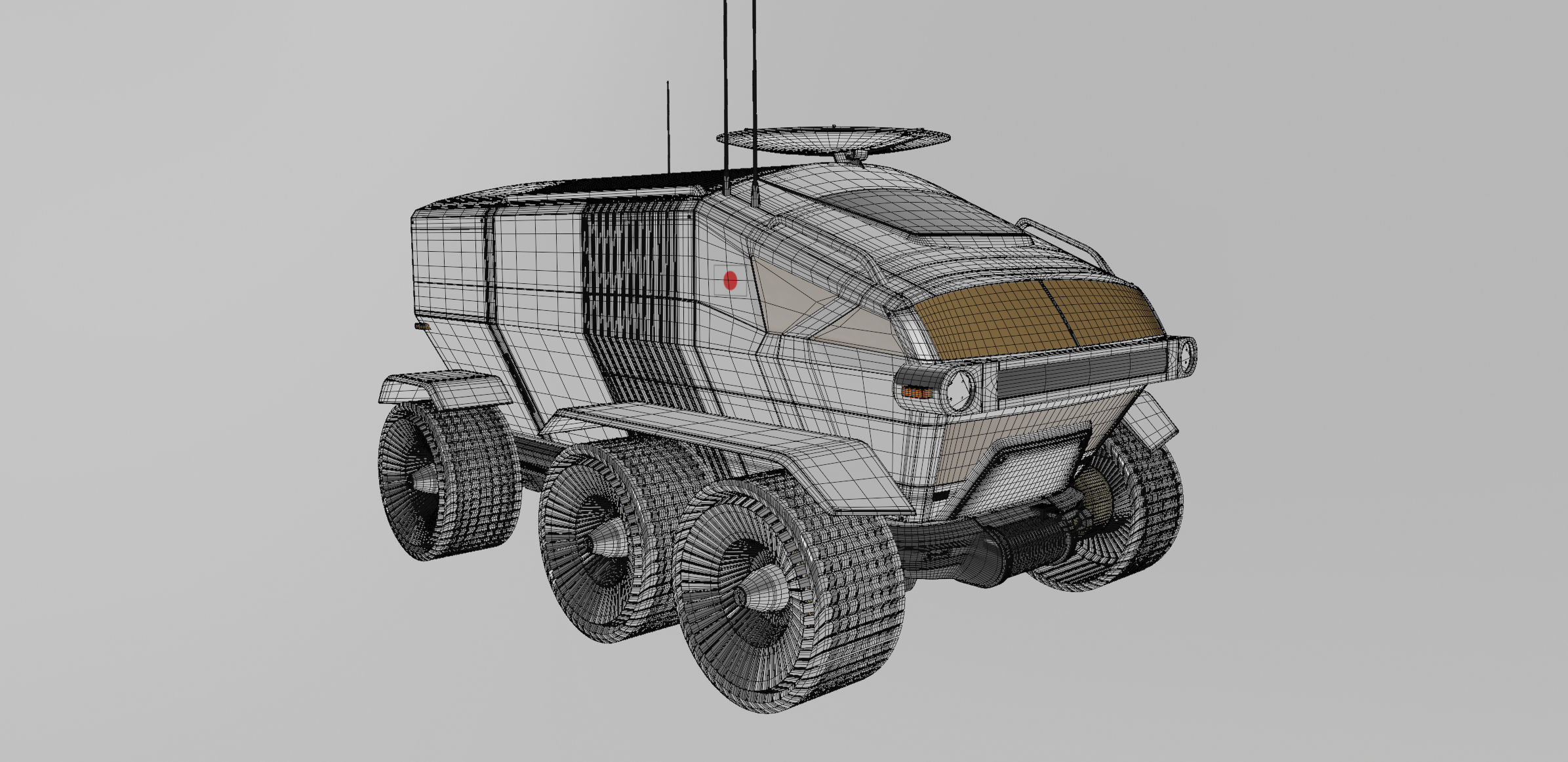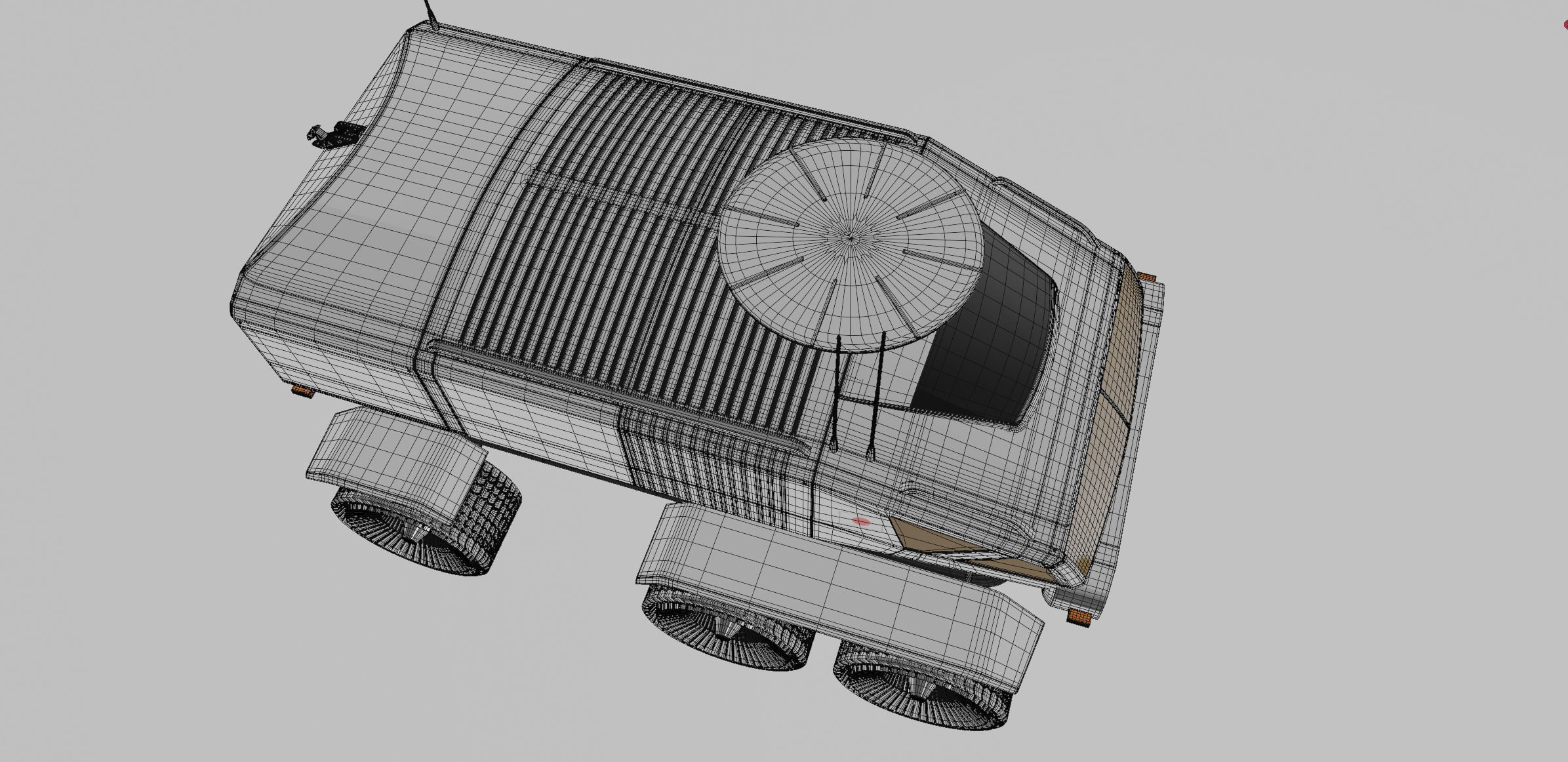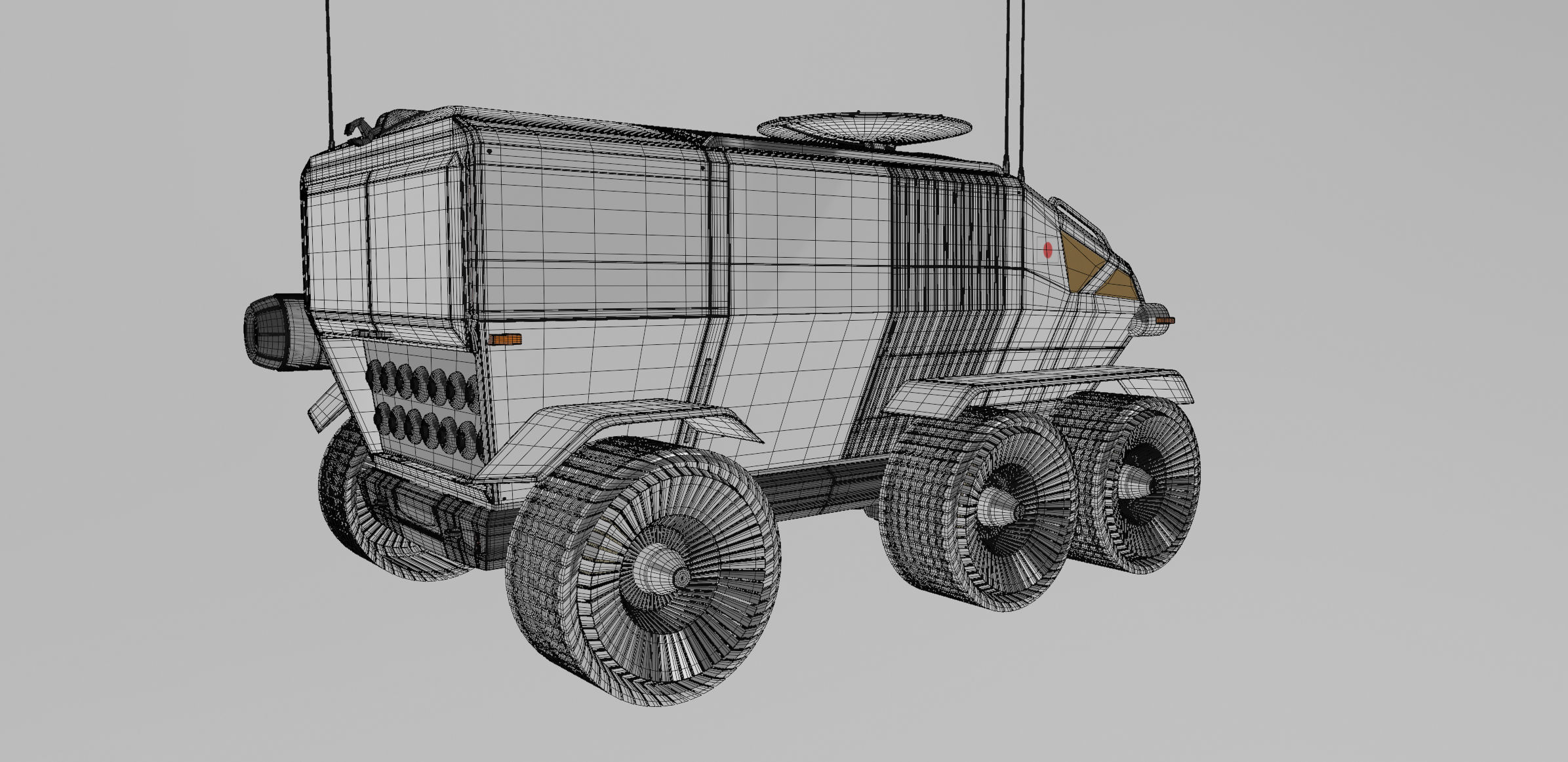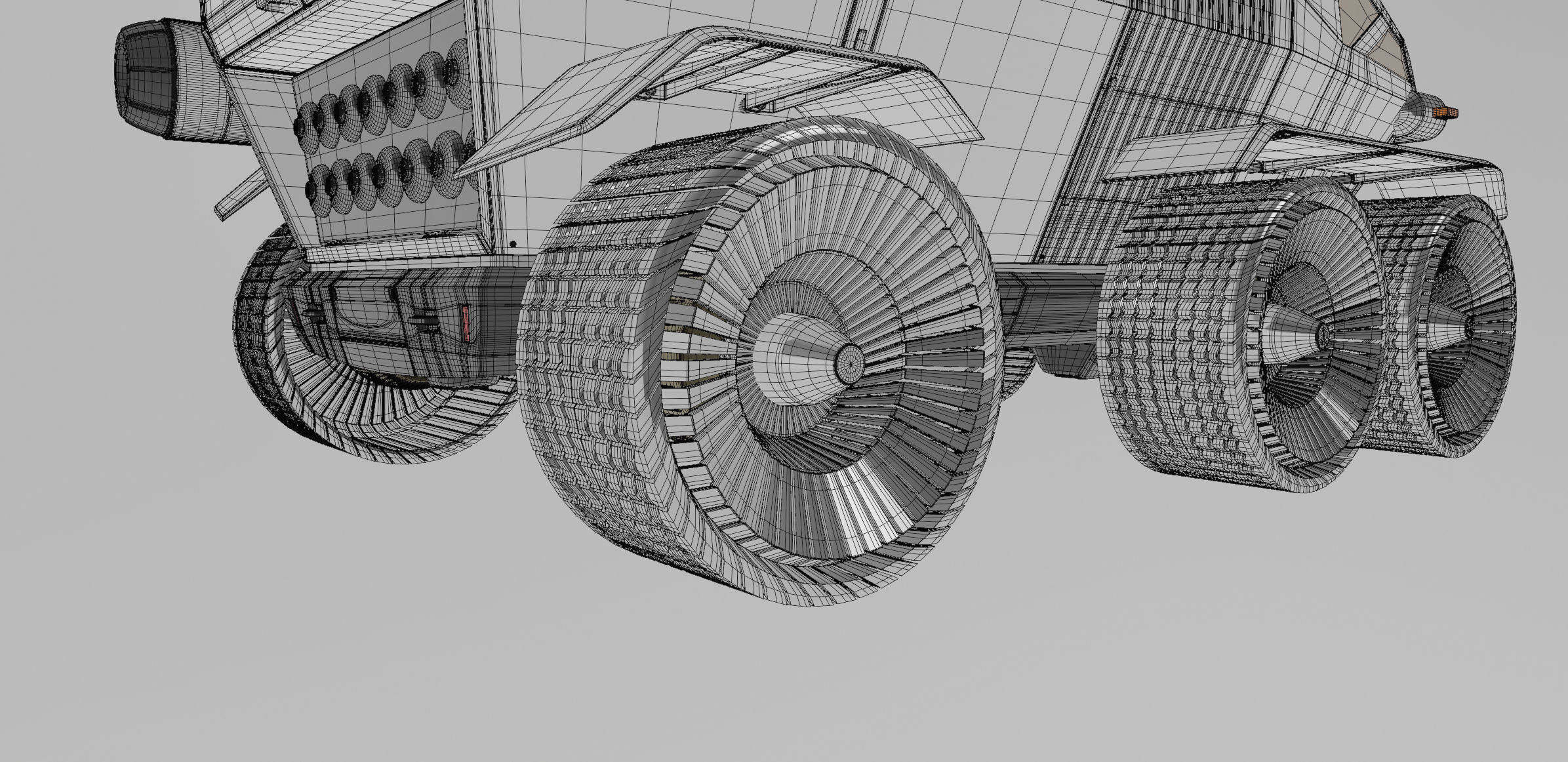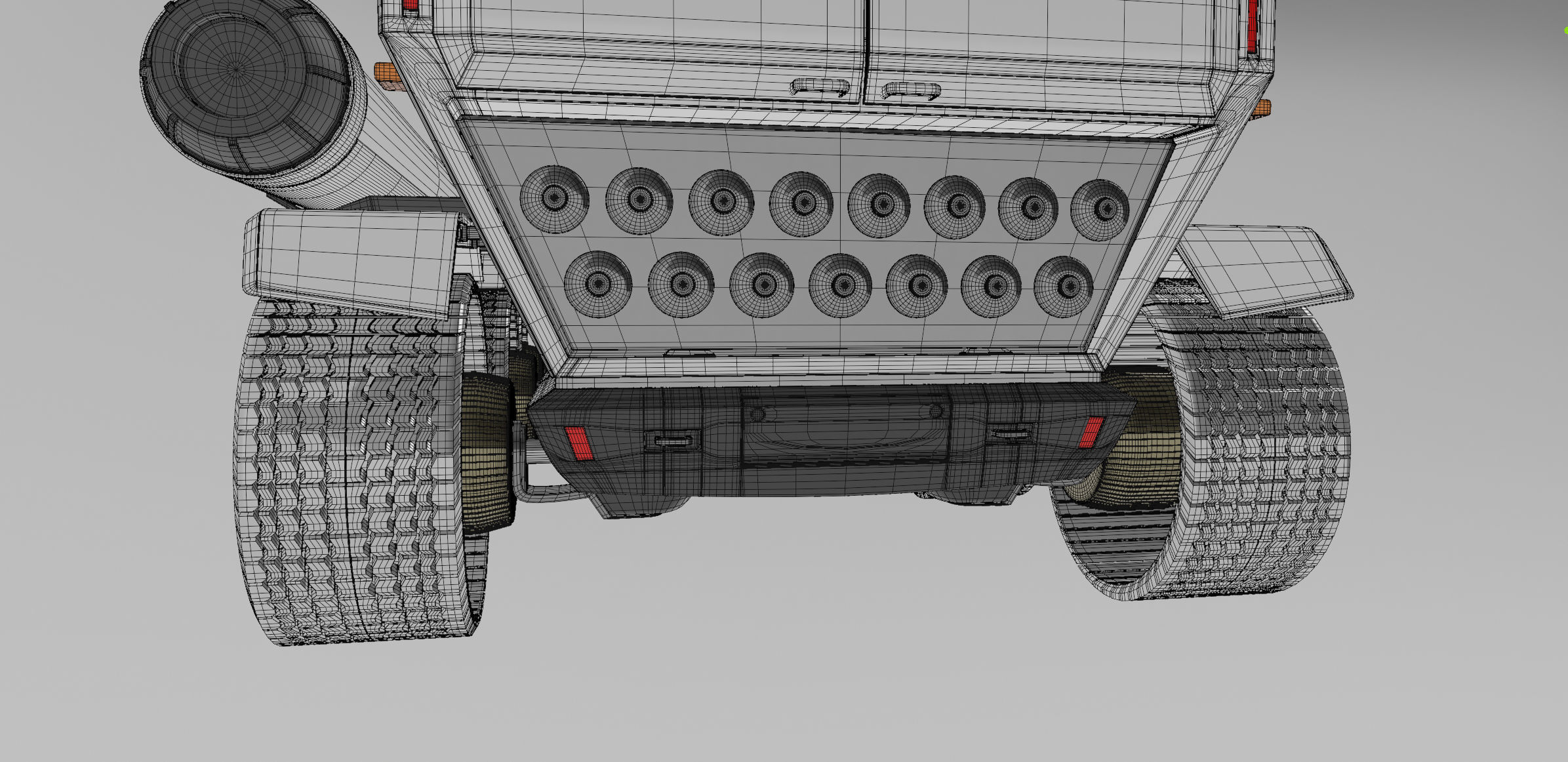
Toyota Lunar Cruiser Jaxa Moon Rover 3D model
E-mail for callaboration: koznov.sergey@gmail.com
Moon Rover Mars, Space, Rover, 3D, ModelThe Japan Aerospace Exploration Agency (JAXA) and Toyota Motor Corporation (Toyota) announced today that they have named the manned pressurized rover which is currently under joint research by JAXA and Toyota the “LUNAR CRUISER” as “nickname”.JAXA and Toyota previously announced and have been conducting joint research on a manned, pressurized lunar rover that uses fuel cell electric vehicle (FCEV) technologies.
The nickname LUNAR CRUISER was chosen because of the familiar feeling it offers the people involved in the development and manufacture of the vehicle prototype as part of the joint research project as well as the familiarity it will provide the general public. The name, which references the Toyota Land Cruiser SUV, was decided upon based on the quality, durability, and reliability expected of the pressurized lunar rover, and the concept that Toyota has long held to for the Land Cruiser, which was for people to “come back alive,” especially true for the lunar rover as it will be traversing the harsh environment of the moon’s surface.JAXA and Toyota signed a joint research agreement to work on a manned pressurized lunar rover last year, on June 13, 2019, with an expected launch date in the latter half of the 2020s. Together, they are working to manufacture test parts for each technological element, and the prototype rover itself, during this fiscal year (FY2020). The work involves the use of simulations to confirm power and heat dissipation performance while driving, the manufacture and assessment of prototype tires, and the use of virtual reality and full-scale models to consider the layout of equipment in the cabin of the LUNAR CRUISER.Furthermore, as part of their efforts to create new partners with “Team Japan,” JAXA and Toyota have been discussing laterally with a variety of industries via study meetings based on the theme of “a lunar society pioneered by the manned pressurized rover” (also known as Team Japan Study Meeting). The meetings focus on how the manned pressurized rover becomes the starting point of a vision of a future lunar surface-based society while discussing the challenges associated with the creation of this type of society.JAXA and Toyota will gather the knowledge, experience and technological capabilities of enterprises from across a variety of industries in their attempt to realize their dream of sustaining continuous activities on the surface of the moon as “Team Japan,” moving forward.
machine technology rover mars nasa car vehicle industry astronomy space science saturn spacecraft machinery power robot otherToyota Jaxa Moon Rover (3D Model)Thankfuly to God I have finished this work for my friend. No textures and materials. Just 3D model.
DESCRIPTION:
- You can offer your Price
- This model is provided as fbx and SPP format.
- 3ds max and v-ray scenes are provided.
- SubstancePainter - file provided.
- Key Shot - file provided.
- Provides full textures for the Moon Rover, as well as an HDRI-map. Textures in the resolution of 4096x4096. Enjoy using! :)
Provided:FBX, KeyShot, MAX+V-Ray, Substance painter File, Other By Request
Japan wants to build the ultimate moon rover for astronauts and has tapped Toyota to help develop a futuristic, off-road, lunar vehicle that could potentially launch in 2029.
The Japan Aerospace Exploration Agency announced Tuesday (March 12) that it is working with vehicle manufacturer Toyota to develop the moon rover of the future a massive vehicle powered by fuel cells with a maximum range of a whopping 6,213 miles (10,000 kilometers).
Manned rovers with pressurized cabins are an element that will play an important role in full-fledged exploration and use of the lunar surface,' JAXA President Hiroshi Yamakawa said in a statement. 'Through our joint studies going forward, we would like to put to use Toyotas excellent technological abilities related to mobility, and we look forward to the acceleration of our technological studies for the realization of a manned, pressurized rover.'
Related: Moon Driving: NASA's Apollo Lunar Rovers in Photos
The plan, JAXA officials said, is to work with Toyota on a huge, pressurized rover that will be typically crewed by two astronauts but capable of accommodating up to four people in an emergency. If current concept designs hold true, the rover will be huge at least 20 feet (6 meters) long, have six wheels, and measure 17 feet (5.2 m) wide and 12.4 feet (3.8 m) high. The vehicle will have about 140 square feet (13 square meters) of living space, JAXA officials said.
Two concept images of the JAXA-Toyota moon rover show a sleek, futuristic lunar car with a cockpit like a nose covered in angular windows. The concept design shows that the rover has headlights and running lights (they might be signal blinkers), as well as brake lights. One image shows what appears to be a rollout solar array to generate power.
This concept of a Japanese moon rover built by Toyota appears to use a rollup solar array for power. JAXA and Toyota are exploring the use of fuel cells for electric power. This concept of a Japanese moon rover built by Toyota appears to use a rollup solar array for power. JAXA and Toyota are exploring the use of fuel cells for electric power. (Image credit: Japan Aerospace Exploration Agency)In comparison, NASA's unpressurized lunar rovers used on the Apollo missions decades ago could seat two astronauts (wearing spacesuits) and were powered by batteries. These vehicles had four wheels and were 10.1 feet long (3.1 m) and 7.5 feet wide (2.3 m), with a maximum height of 3.7 feet (1.14 m). The Lunar Roving Vehicles, as NASA called them, were powered by batteries, according to NASA documents.
Related: NASA's Space Exploration Vehicle Concept in Pictures
JAXA and Toyota have been working together on the moon rover project since May 2018. Building the equivalent of a rugged sports utility vehicle for the moon comes with challenges, JAXA officials said.
'Lunar gravity is one-sixth of that on Earth. Meanwhile, the moon has a complex terrain with craters, clif

